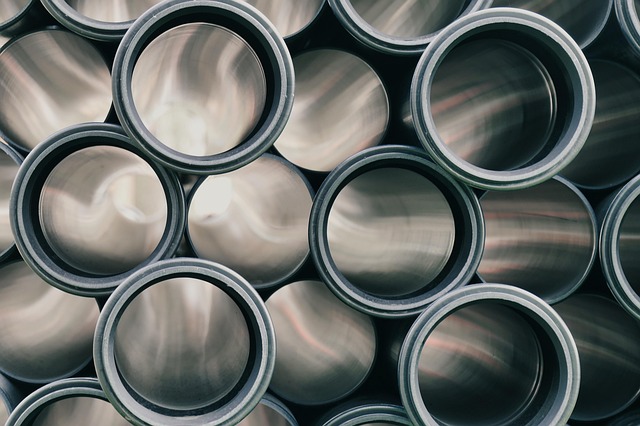A septic system, a self-contained wastewater treatment solution, relies on a tank for partial waste breakdown, followed by soil or media filtration in a drain field. Effective maintenance involves regular pumping and avoiding non-biodegradable materials. Bacterial supplements and enzyme-based cleaners enhance digestion, reduce sludge, prevent clogs, and minimize odors. Misinformation abounds; proper maintenance focuses on supporting natural processes and fostering healthy bacterial growth. Homeowners should avoid chemical interventions and excessive flushing to ensure optimal performance without disrupting essential microorganisms.
“Maintaining a healthy septic system is vital for any property owner, ensuring efficient waste treatment and preventing costly repairs. This comprehensive guide unravels the intricacies of your septic system’s functionality, offering insights into its key components and how they work in harmony.
We explore effective products designed to optimize performance, including top choices for natural, eco-friendly solutions and chemical alternatives. Moreover, we debunk common misconceptions, highlighting what truly enhances septic health and what falls short in the realm of maintenance practices.”
- Understanding Your Septic System: Key Components & Functionality
- Effective Products for Septic Health: Top Choices & Benefits
- Common Misconceptions: What Doesn't Work for Septic System Maintenance
Understanding Your Septic System: Key Components & Functionality

A septic system is a complex network designed to treat and dispose of wastewater from homes and buildings that don’t have direct access to a public sewer system. It consists of several key components, each playing a vital role in its functionality. At the heart of the system is the septic tank, where organic matter from household waste is broken down by bacteria into simpler substances. This process reduces the volume of waste and prevents it from clogging pipes. The tank’s contents are then partially treated and transferred to a drain field, made up of porous soil or artificial media, which further filters and absorbs the water before it seeps into groundwater.
Regular septic system maintenance is crucial for ensuring these components work harmoniously. This includes periodic pumping of the septic tank to remove solid waste buildup and prevent excess pressure on the entire system. Proper care also encompasses avoiding the introduction of non-biodegradable materials, such as certain chemicals, fats, and grease, which can disrupt the natural bacterial balance inside the tank. Understanding these basic principles is essential for effective septic system maintenance and preventing costly repairs or replacements.
Effective Products for Septic Health: Top Choices & Benefits

Maintaining a healthy septic system is essential for ensuring efficient waste management and preventing costly repairs. Among the myriad products available in the market, some stand out as effective solutions for optimal septic health. Bacterial supplements are a top choice among experts, introducing beneficial bacteria that aid in breaking down organic matter and maintaining a balanced ecosystem within the septic tank. This natural approach enhances the digestion process, reducing the buildup of sludge and prolonging the life of your system.
Another highly recommended product is enzyme-based cleaners, which act as powerful catalysts for biological degradation. These enzymes target specific organic compounds, such as grease, protein, and starches, breaking them down into simpler substances that are easily assimilated by septic bacteria. Regular use of these products can prevent clogs, reduce odor, and minimize the risk of tank damage, contributing to seamless septic system maintenance.
Common Misconceptions: What Doesn't Work for Septic System Maintenance

Many homeowners hold onto misconceptions about what truly promotes and maintains a healthy septic system. It’s common to find advice ranging from using specific chemicals to excessive water consumption as solutions for optimal septic health, but these methods often lack scientific support. One widespread false belief is that pouring bleach or strong disinfectants down the drains can kill bacteria in the system, but this can actually be detrimental. These chemicals can disrupt the delicate balance of microorganisms essential for proper waste decomposition.
Additionally, while some advocate for regular flushing of various products to “clean” the septic tank, this practice may not only be unnecessary but could also lead to over-loading the system with foreign materials that aren’t easily broken down by the beneficial bacteria. Remember, the key to effective septic system maintenance lies in understanding and mimicking natural processes, promoting healthy bacterial growth, and making responsible choices regarding what goes into your septic tank.
When it comes to maintaining a healthy septic system, understanding what works and what doesn’t is key. By adhering to evidence-based practices and utilizing effective products highlighted in this article, you can ensure optimal performance and longevity of your septic system. Remember, proper septic system maintenance involves more than just common misconceptions; it’s about informed choices that support the delicate balance of nature. Prioritize regular inspections, responsible waste management, and eco-friendly product selection for a seamless and sustainable experience.
